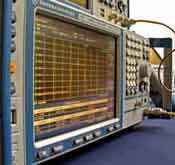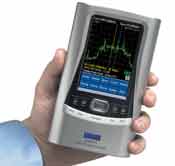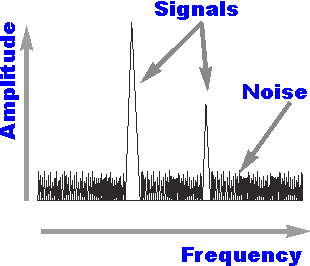Products Category
- FM Transmitter
- 0-50w 50w-1000w 2kw-10kw 10kw+
- TV Transmitter
- 0-50w 50-1kw 2kw-10kw
- FM Antenna
- TV Antenna
- Antenna Accessory
- Cable Connector Power Splitter Dummy Load
- RF Transistor
- Power Supply
- Audio Equipments
- DTV Front End Equipment
- Link System
- STL system Microwave Link system
- FM Radio
- Power Meter
- Other Products
- Special for Coronavirus
Products Tags
Fmuser Sites
- es.fmuser.net
- it.fmuser.net
- fr.fmuser.net
- de.fmuser.net
- af.fmuser.net ->Afrikaans
- sq.fmuser.net ->Albanian
- ar.fmuser.net ->Arabic
- hy.fmuser.net ->Armenian
- az.fmuser.net ->Azerbaijani
- eu.fmuser.net ->Basque
- be.fmuser.net ->Belarusian
- bg.fmuser.net ->Bulgarian
- ca.fmuser.net ->Catalan
- zh-CN.fmuser.net ->Chinese (Simplified)
- zh-TW.fmuser.net ->Chinese (Traditional)
- hr.fmuser.net ->Croatian
- cs.fmuser.net ->Czech
- da.fmuser.net ->Danish
- nl.fmuser.net ->Dutch
- et.fmuser.net ->Estonian
- tl.fmuser.net ->Filipino
- fi.fmuser.net ->Finnish
- fr.fmuser.net ->French
- gl.fmuser.net ->Galician
- ka.fmuser.net ->Georgian
- de.fmuser.net ->German
- el.fmuser.net ->Greek
- ht.fmuser.net ->Haitian Creole
- iw.fmuser.net ->Hebrew
- hi.fmuser.net ->Hindi
- hu.fmuser.net ->Hungarian
- is.fmuser.net ->Icelandic
- id.fmuser.net ->Indonesian
- ga.fmuser.net ->Irish
- it.fmuser.net ->Italian
- ja.fmuser.net ->Japanese
- ko.fmuser.net ->Korean
- lv.fmuser.net ->Latvian
- lt.fmuser.net ->Lithuanian
- mk.fmuser.net ->Macedonian
- ms.fmuser.net ->Malay
- mt.fmuser.net ->Maltese
- no.fmuser.net ->Norwegian
- fa.fmuser.net ->Persian
- pl.fmuser.net ->Polish
- pt.fmuser.net ->Portuguese
- ro.fmuser.net ->Romanian
- ru.fmuser.net ->Russian
- sr.fmuser.net ->Serbian
- sk.fmuser.net ->Slovak
- sl.fmuser.net ->Slovenian
- es.fmuser.net ->Spanish
- sw.fmuser.net ->Swahili
- sv.fmuser.net ->Swedish
- th.fmuser.net ->Thai
- tr.fmuser.net ->Turkish
- uk.fmuser.net ->Ukrainian
- ur.fmuser.net ->Urdu
- vi.fmuser.net ->Vietnamese
- cy.fmuser.net ->Welsh
- yi.fmuser.net ->Yiddish
What is Spectrum Analyzer?
- RF spectrum analysers are an essential tool for RF and other engineers, providing a view of the spectrum of signals with their amplitudes and frequencies.
Spectrum analyzers are widely used within the electronics industry for analysing the frequency spectrum of radio frequency, RF and audio signals. Looking at the spectrum of a signal they are able to reveal elements of the signal, and the performance of the circuit producing them that would not be possible using other means.


Why spectrum analysis?
The most natural way to look at waveforms is in the time domain - looking at how a signal varies in amplitude as time progresses, i.e. in the time domain. This is what an oscilloscope is used for, and it is quite natural to look at waveforms on an oscilloscope display. However this is not the only way in which signals can be displayed.
A French mathematician and physicist, named Jean Baptiste Joseph Fourier, who lived from 1768 to 1830 also started to look at how signals are seen in another format, in the frequency domain where signals are viewed as a function of their frequency rather than time. He discovered that any waveform seen in the time domain, there is an equivalent representation in the frequency domain. Expressed differently, any signal is made up from a variety of components of different frequencies. One common example is a square waveform. This is made up from signal comprising the fundamental as well as third, fifth, seventh, ... harmonics in the correct proportions.
In exact terms it is necessary that the signal must be evaluated over an infinite time for the transformation to hold exactly. However in reality it is sufficient to know that the waveform is continuous over a period of at least a few seconds, or understand the effects of changing the signal.
It is also worth noting that the mathematical Fourier transformation also accommodates the phase of the signal. However for many testing applications the phase information is not needed and considerably complicates the measurements and test equipment. Also the information is normally not needed, and only the amplitude is important.
By being able to look at signals in the time domain provides many advantages and in particular for RF applications, although audio spectrum analyzers are also widely used. Looking at signals in the frequency domain with a spectrum analyzer enables aspects such as the harmonic and spurious content of a signal to analyzed. Also the width of signals when modulation has been applied is important. These aspects are of particular importance for developing RF signal sources, and especially any form of transmitter including those in cellular, Wi-Fi, and other radio or wireless applications. The radiation of unwanted signals will cause interference to other users of the radio spectrum, and it is therefore very important to ensure any unwanted signals are kept below an acceptable level, and this can be monitored with a spectrum analyzer.
Spectrum analyzer basics
There are many different types of RF test equipment that can be used for measuring a variety of different aspects of an RF signal. It is therefore essential to choose the right type of RF test equipment to meet the measurement requirements for the particular job in hand.
TEST INSTRUMENT TYPE
FREQUENCY MEASUREMENT
INTENSITY / AMPLITUDE MEASUREMENT
APPLICATION
Power meter
N
Y
Use for accurate total power measurements
Frequency counter
Y
N
Used to provide very accurate measurements of the dominant
frequency within a signal
Spectrum analyser
Y
Y
Used primarily to display the spectrum of a radio frequency
signal. Can also be used to make power and frequency measurements, although
not as accurately as dedicated instruments
RF network analyser
Y
Y
Used to measure the properties of RF devices
Properties of RF measuring instruments in common use
The spectrum analyzer is able to offer a different measurement capability to other instruments. Its key factor is that it is able to look at signals in the frequency domain, i.e. showing the spectrum, it is possible to see many new aspects of the signal.
An analyser display, like that of an oscilloscope has two axes. For the spectrum analyser the vertical axis displays level or amplitude, whereas the horizontal axis displays frequency. Therefore as the scan moves along the horizontal axis, the display shows the level of any signals at that particular frequency.

General format of the display on a spectrum analyzer

